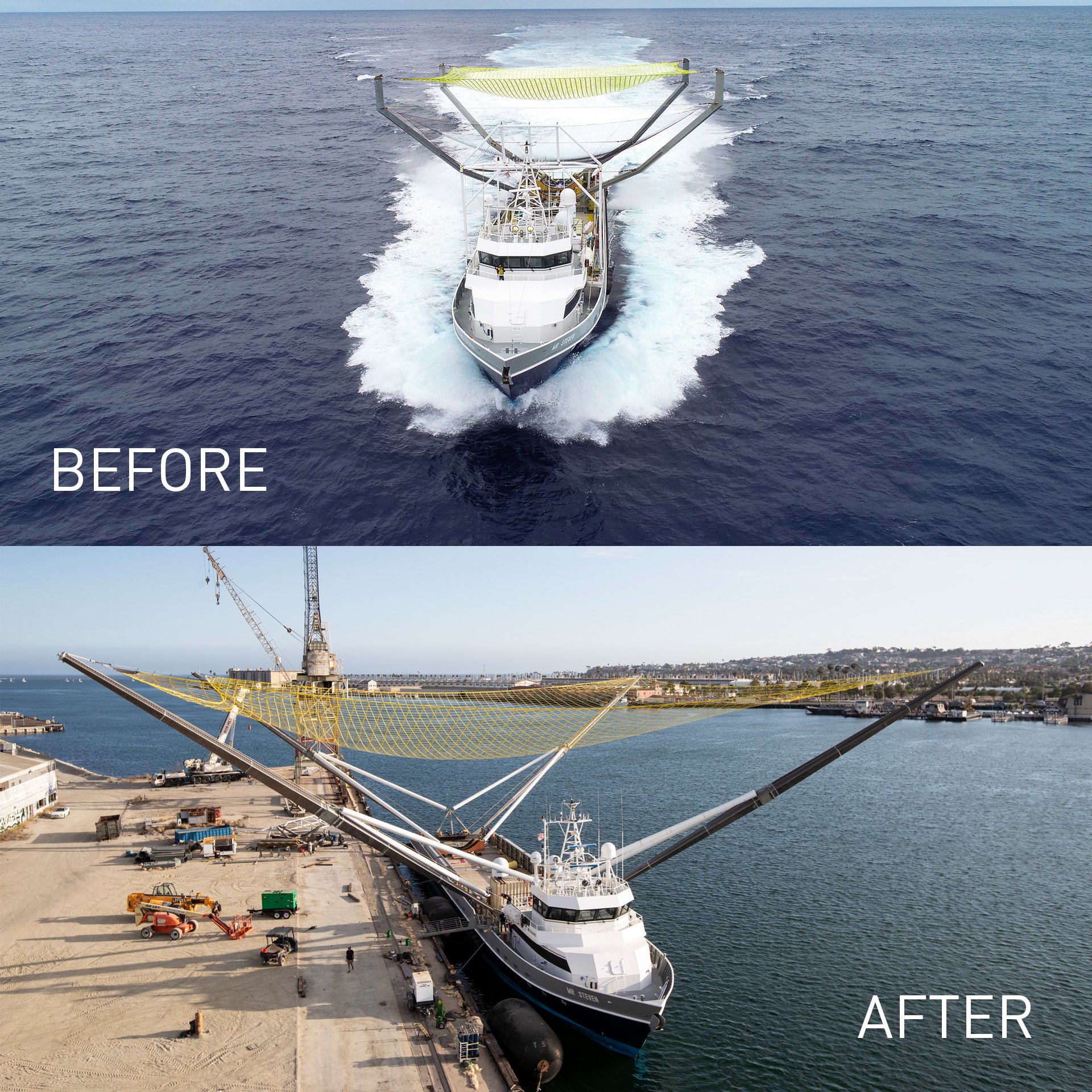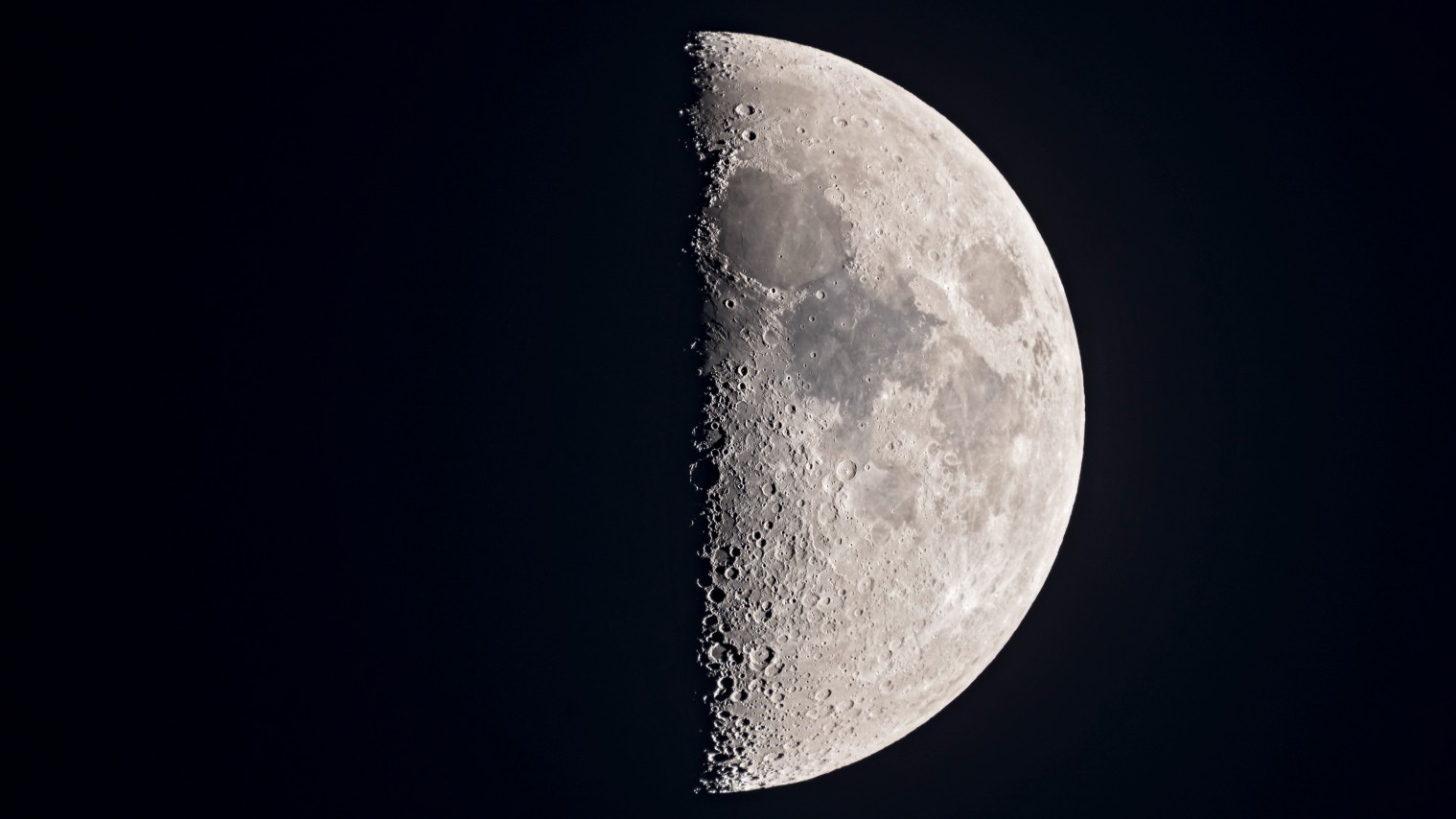
Mr. Steven now has some more margin for error.
SpaceX has outfitted the speedy boat with a much larger net, to give it a better chance of plucking payload fairings — the nose cones that protect spacecraft during launch — out of the sky.
"Mr. Steven — now with more net. SpaceX's fairing recovery vessel has been fitted with a 4x larger net ahead of its next recovery attempt targeted for later this month," SpaceX representatives wrote via Instagram Friday (July 13), along with before-and-after photos of the 205-foot-long (62 meters) boat.
Mr. Steven is part of SpaceX's push to develop fully and rapidly reusable rockets and spacecraft. Such technology could slash the cost of spaceflight enough to make bold projects like Mars colonization economically feasible, SpaceX founder and CEO Elon Musk has said.
SpaceX already routinely lands and relaunches first stages of its workhorse, two-stage Falcon 9 rocket. Snagging Falcon 9 fairings makes a lot of economic sense as well; they cost about $6 million apiece, Musk has said. And plucking them out of the air, before they hit the highly corrosive seawater, is key.
Each Falcon 9 fairing consists of two pieces, both of which come back to Earth under parachute (actually, parafoil) shortly after liftoff. The fairing halves are also equipped with small thrusters and can therefore steer themselves toward desired splashdown points.
Mr. Steven has tried to snag a fairing half on three separate occasions, in February, March and May of this year. On the first and third tries, it was close but no cigar: Mr. Steven got within a few hundred meters in February and missed by about 50 meters (160 feet) in May, SpaceX representatives have said. During the March attempt, the targeted half's parafoil twisted, and the fairing piece slammed into the ocean hard.
Get the Space.com Newsletter
Breaking space news, the latest updates on rocket launches, skywatching events and more!
The boat will make its next attempt on July 25, when a Falcon 9 will loft 10 satellites for the communications company Iridium from Vandenberg Air Force Base in California, according to media reports.
Follow Mike Wall on Twitter @michaeldwall and Google+. Follow us @Spacedotcom, Facebook or Google+. Originally published on Space.com.
Join our Space Forums to keep talking space on the latest missions, night sky and more! And if you have a news tip, correction or comment, let us know at: community@space.com.

Michael Wall is a Senior Space Writer with Space.com and joined the team in 2010. He primarily covers exoplanets, spaceflight and military space, but has been known to dabble in the space art beat. His book about the search for alien life, "Out There," was published on Nov. 13, 2018. Before becoming a science writer, Michael worked as a herpetologist and wildlife biologist. He has a Ph.D. in evolutionary biology from the University of Sydney, Australia, a bachelor's degree from the University of Arizona, and a graduate certificate in science writing from the University of California, Santa Cruz. To find out what his latest project is, you can follow Michael on Twitter.
